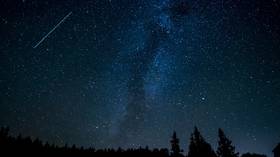Orionids are due to peak next week: Here’s what they are & how to watch

It’s that spectacular time of the year again when the Earth passes through the debris field left in the wake of Halley’s Comet and the sky lights up with dozens of shooting stars, known as the Orionids meteor shower.
“I would rank the Orionids in the top five meteor showers of the year,” AccuWeather Astronomy Blogger Dave Samuhel said. “It will be the strongest shower since the Perseids of August.”
The Orionids, named after their point of origin in the constellation Orion, are already underway and are due to peak on October 22 and 23 before concluding on November 7. At the height of the celestial display, stargazers can expect to see up to 30 to 40 meteors streaking across the night sky 60 miles up (conditions permitting) at speeds of up to 148,000mph.
How to catch the celestial show
The best chance for visibility will be an hour or two before dawn at 6:55am ET on October 23. Though, more generally, the shower is best viewed after midnight, once Orion is fully visible in the night sky.
The higher in the sky the radiant point is, the higher the rate of meteors per hour. The meteors appear for longer and are more spectacular at around 45 to 90 degrees away from the radiant, so make you sure to adjust your viewing angle if you are braving the early morning cold.
As always, experts advise that you get away from the city lights if you can, lie down on flat ground facing the constellation Orion, and head out early (roughly 30 minutes before the peak should do the trick) to give your eyes time to adjust to the darkness.
Unfortunately, the show will be somewhat spoiled as it takes place while the Moon is at its brightest. Then there’s the inevitable risk of cloud cover. Still, the promise of two dozen meteors per hour should be enough to entice die-hard amateur astronomers out of bed.
For those who will miss out on the Orionids peak, fear not, as there are four more meteor showers expected to peak in the closing months of 2019, including the Geminids in mid-December, with an expected peak of over 100 meteors per hour.
Think your friends would be interested? Share this story!












